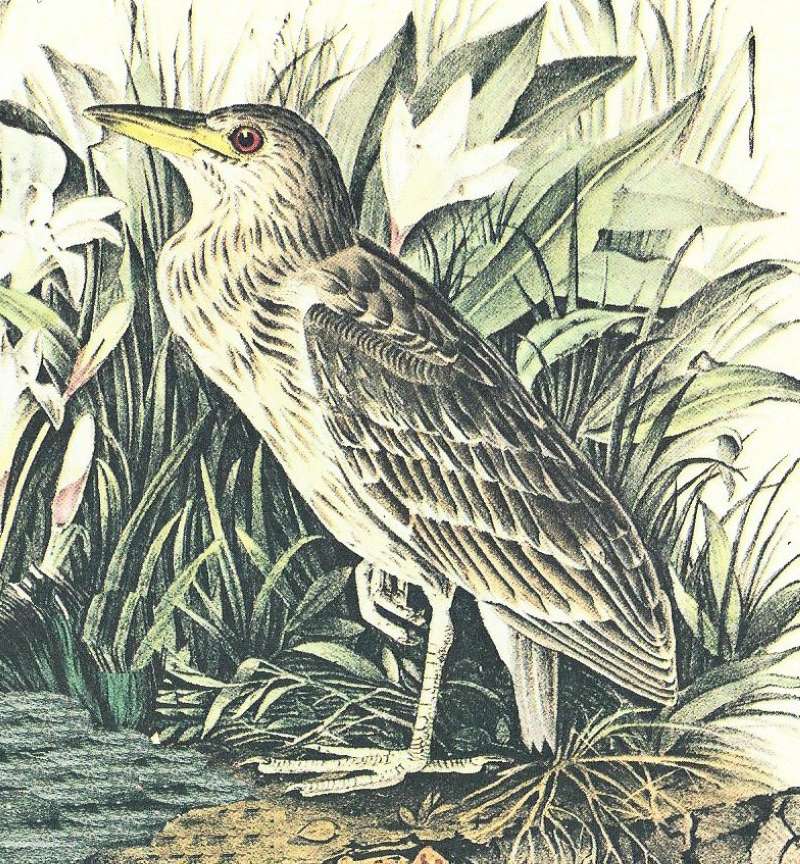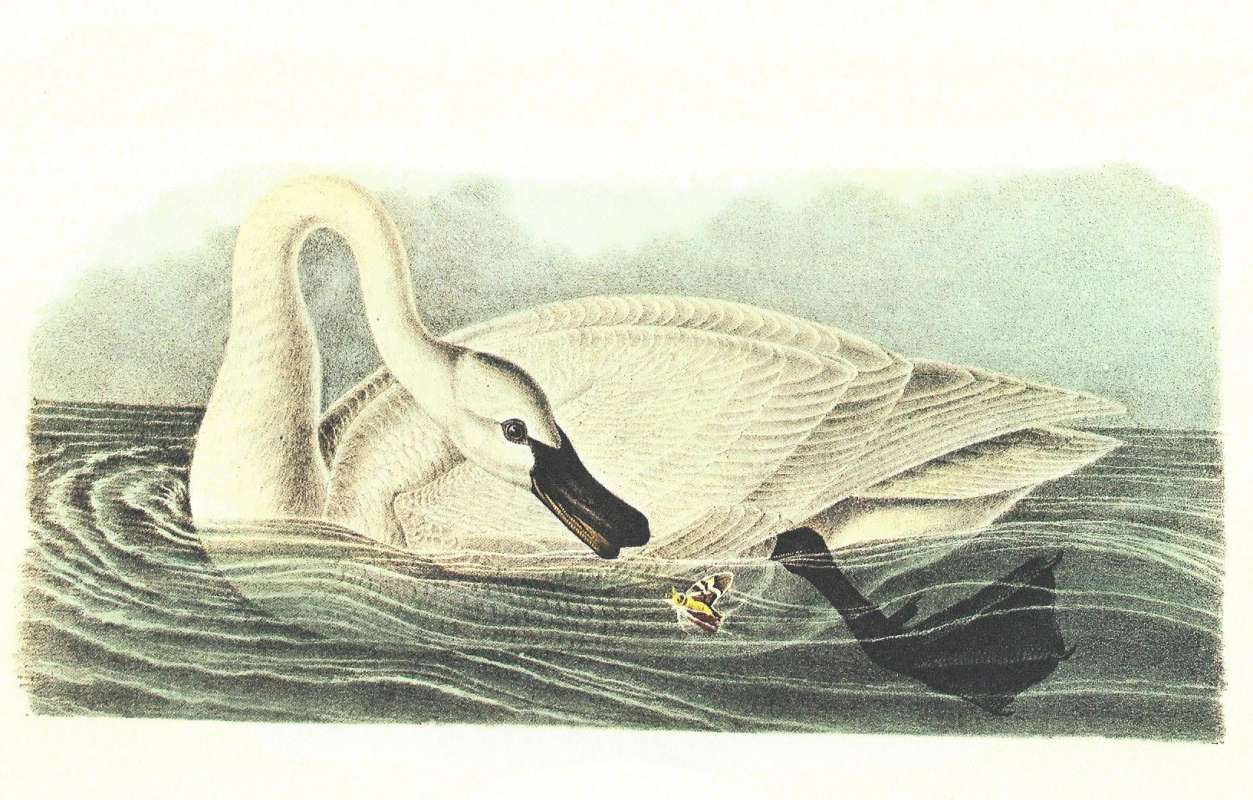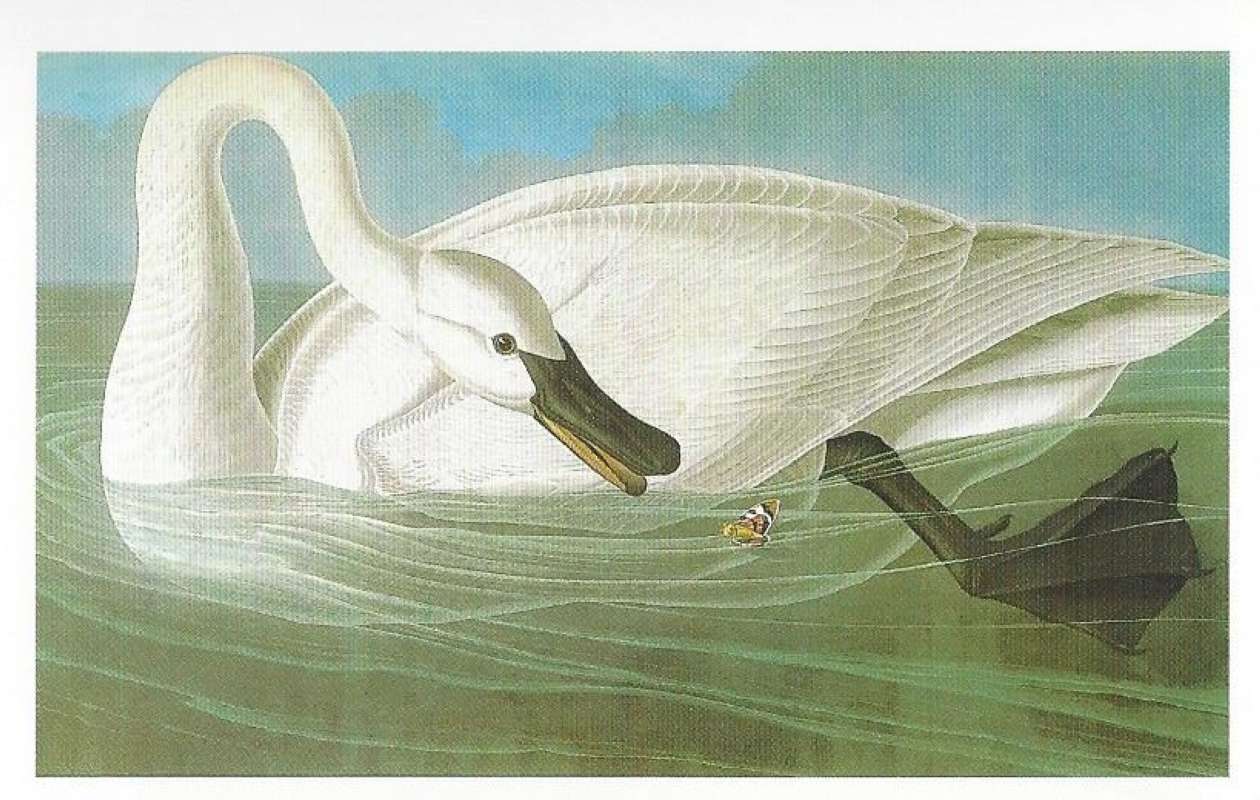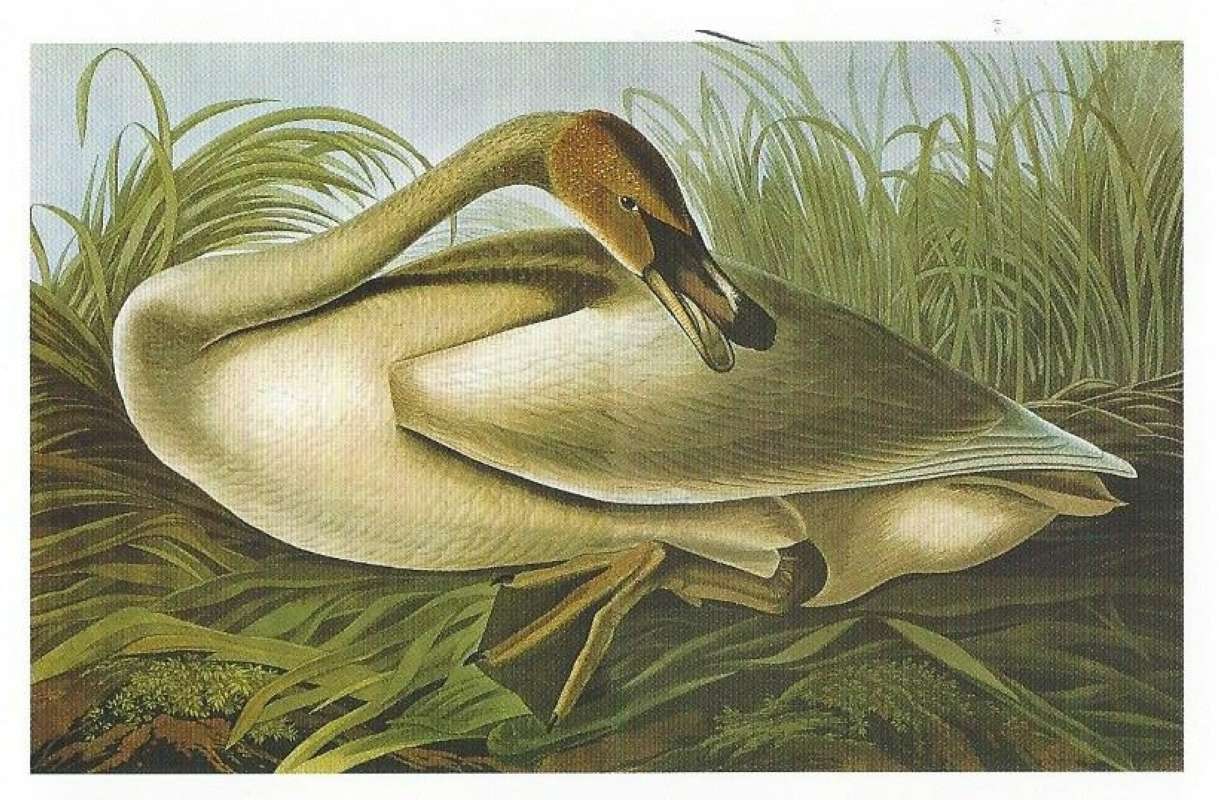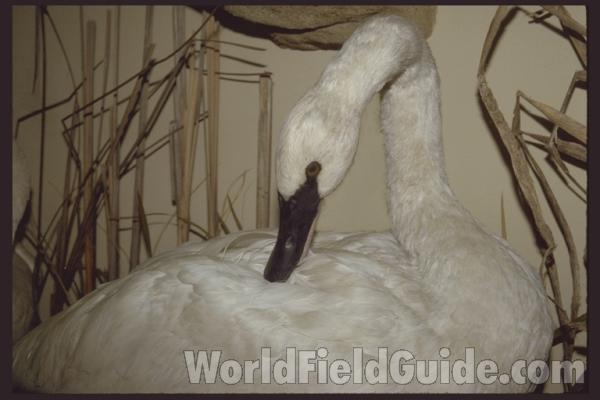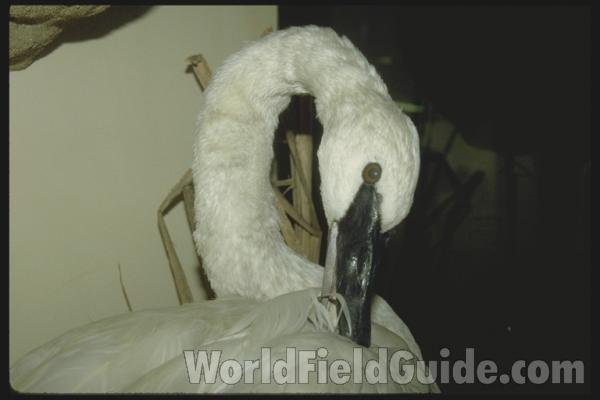SPECIES INFO
Trumpeter Swans (Olor buccinator to Cygnus buccinator) are found rarely from Nevada to Alaska. Because this species is in danger of extinction, it has been reintroduced in various places in the United States. These are very large white birds and can be up to seventy inches long with a wingspan up to ten feet.
There are no subspecies.
This bird is on a watch list, and as of 2010 its population was estimated at less than 40,000. The breeding range is very limited with areas in southern Alaska and small areas in west central Canada.The swan genus Cygnus is found in the Old World from northern Eurasia south to South Africa and Australia. In the New World this genus is found from northern North America south to southern South America. There are 6 species. The species found in the Northern Hemisphere are largely white, and the two species found in the Southern Hemisphere are black or white with a black head and neck. These are generally very large birds from about 42 to 65 inches in length.
In older books, the Australian black swan was placed in a separate genus Chenopis. Some authors break the Tundra swan, Cygnus columbianus, into two separate species: Cygnus bewickii of the Old World and Cygnus columbianus of the New World. This would raise the genus count to 7 species. The Coscoroba swan is normally kept in a separate genus in the swan subfamily (tribe) and named Coscoroba coscoroba.
Swans have very long necks, and many species feed by floating on the water, and using their long necks reach down to find edible plants and some small animals. Several species rest with their necks curved into graceful curves (include Cygnus atrata and Cygnus olor). Other species float with a straight neck (include Cygnus buccinator).
Geese and Swan subfamily (Subfamily Anserinae) contains the geese and swans. 23 species have been placed in this
subfamily as follows:
ANSERANATINAE (ONE SPECIES ((Not Counted Herein))
Anseranas semipalmata Magpie Goose Australia (Herein we have raised this to full family status.)
ANSERINAE (24 SPECIES not counting Stictonetta)
Cygnus olor - Mute Swan - Europe and introduced
Cygnus atratus - Black Swan - Australia
Cygnus melanocoryphus - Black Neck - Neotropical
Cygnus cygnus - Whooper - Eurasia
Cygnus buccinator - Trumpeter - North America
Cygnus columbianus - Whistling - North America
Cygnus bewickii - Eurasian Tundra - Eurasia
Coscoroba coscoroba - Coscoroba - Neotropic
Anser albifrons - White Front - Holarctic
Anser anser - Graylag - Eurasia
Anser brachyhnchus - Bean - Greenland & Europe
Anser canagicus - Emperor - Alaska & Siberia
Anser coreulescens - Blue - Canada
Anser cygnoides - Swan Goose - Asia
Anser erythropus - Lesser White - Eurasia
Anser fabalis - Bean Goose - Eurasian & Orient
Anser indicus - Bar Head - Eurasia
Anser rossii - Ross' Goose - Canada
Branta canadensis - Canada - N. America
Branta bernicla - Brant - Arctic
Branta leucopsis - Barnacle - Greenland and Europe
Branta ruficollis - Red Breast - Eurasia
Branta sandvicensis - Hawaiian - Hawaii
Cereopsis novaeholland - Cape Barren - Australia
Stictoneta naevosa - Freckled - Australia
(Herein we have moved the Freckled Duck into its own subfamily)
Duck and Geese Family (Family Anatidae) contains the familiar ducks and geese. There are about 155 species in this family. (Excluding the 9 Whistling Ducks or 164 including them)
Some forms are sometimes regarded as species, and at other times are regarded as subspecies. An attempt has been made here to include as species those forms that frequently appear both ways (Anas crecca/carolinensis, for example).
It is also difficult to exactly count the species, as some authors ignore recently extinct species, and other authors include them in their counts. The following recent extinctions have also been included in the lists that follow as these may cause problems for the taxonomist trying to tie out exact counts:
Labrador Duck - Camptorhynchus labradorius
Korean Shelduck - Tadorna cristata
Madagascan White-Eye - Aythya innotata
Auckland Merganser - Mergus australis
Pink Headed Duck - Rhodonessa caryophyllaca
Sheldgoose-Mauritius - Alopochen mauritianus
Sheldgoose-Reunion - Alopochen kervazoi
This family is usually divided into several tribes as it helps the taxonomist and student alike in learning the many species. There is no agreement upon the natural subdivisions of this family. The following divisions were arbitrarily chosen and placed into an arbitrary order:
Surface Ducks - Anatinae - 64 species
Geese and Swans - Anserinae - 24 species
Freckled Duck - Stictonettinae - 1 species
Tadorna Group - Tadorninae - 25 species
Diving Ducks - Aythyinae - 25 species
Mergansers - Mergini - 7 species
Ruddy Ducks - Oxyurinae 9 species
Total 155 species
Waterfowl Order (Order Anseriformes) contains three different families of rather divergent appearance and habitat. The South American (Neotropical) Screamers contains three species. The Magpie-Goose family contains one species. And the worldwide ducks and geese (including the whistling ducks) contains about 164 species to total about 168 species in the order. Actually, at least seven of Anseriformes species are recently extinct, and different authors count these differently.
We herein separate the whistling ducks (Dendrocygninidae) into a separate order and family.
The members of this order have three foreward pointing toes that are webbed. The hind toe is free, but very small. The top bill is wide, and the lower bill is smaller. The diving ducks can have narrow bills.
Aves contains about 8,650 different species of living birds known to science. Each year about one new species is discovered in some remote rain forest or remote island. In addition, scientists have been raising many subspecies to full species status which may raise the species count to 10,000. Birdlife recognizes 10,027 species as of 2011.
However, each year about one species goes extinct. The rate of extinction is increasing, and the rate of new discovery is decreasing, so that the number of bird species will soon begin to decline rapidly. Although different taxonomists would organize the birds differently, there are approximately twenty-seven orders of birds. These orders are broken down into about one hundred and fifty-five different families.
Recent research of the genetic structure of some of the shore birds and owls would indicate that the present organization of orders and families should have some modification.
The birds are a worldwide group of animals that are characterized by having the front limbs modified into wings that are used for flying. Perhaps the most unique feature of the birds is the feathers. These feathers are made up of a central support called a quill and a series of small filaments that are hooked together as barbs.
For many years it was believed that Archaeopteryx discovered in Bavaria was the oldest bird from about 150 million years ago. However, in l986, Sankar Chattterjee, a Texas paleontologist, reportedly discovered a bird in the genus Protoavis that lived about 225 million years ago.
When this project was begun in 1978, we used Austin & Singer for bird taxonomy. Since then, we have adopted many changes, but have kept some older concepts that are still found widely in the literature. Recently, we have used Clements and Howard & Moore. Very recently, we have used Monroe and Sibley for the higher taxonomy of the perching birds.
Backboned Animals (Phylum Chordata) are the most advanced group of animals on earth. These animals are characterized by having a spinal cord or backbone. Most members have a clearly defined brain that controls the organism through a spinal cord. Fish, amphibians, reptiles, birds, and mammals are in this phylum.
Currently, some taxonomists believe that the fish should be divided into two groups (sharks and regular fishes) and that there are some other primitive groups in the phylum such as hagfish or lampreys.
Animal Kingdom contains numerous organisms that feed on other animals or plants. Included in the animal kingdom are the lower marine invertebrates such as sponges and corals, the jointed legged animals such as insects and spiders, and the backboned animals such as fish, amphibians, reptiles, birds, and mammals.





